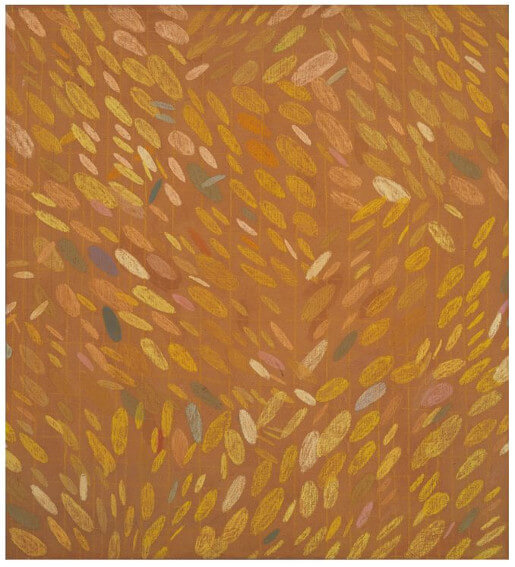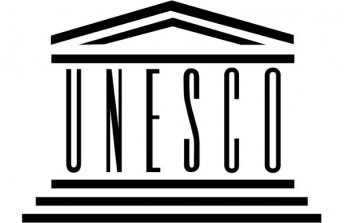Howardena Pindell - Finally in the Spotlight
Mar 21, 2018
Two concurrent Howardena Pindell exhibitions recently opened in Chicago—one, a complete retrospective at the Museum of Contemporary Art (MCA) Chicago; the other, at Document Space, presents an in-depth look at the “Video Drawings” Pindell has been making since the 1970s. This attention to Pindell is overdue. And frankly, it is not enough. An iconic monument of Pindell should be created—something like an image of a secular saint—and it should be installed in every art school in the world. Pindell exemplifies artistic integrity. She has, over the course of the past 40 years, relentlessly chosen method over market madness—that particular insanity that sometimes overtakes art dealers, curators and art professors. Market madness is what causes art world power brokers to subtly (or not-so-subtly) manipulate artists into altering their vision in service to commercial artistic strategies. Market madness manifests whenever a teacher tells a student to copy an established style; or whenever a gallerist tells an artist they would sell more work if they made their content about their gender, race, nationality, sexuality, or personal struggles; or whenever a curator compares an artist to other artists in order to art-splain the work to the ticket-buying public. It is a scourge—one against which Pindell has resisted for more than 50 years.
All In the Art
Pindell first addressed the way forces in the art market manipulate artists in her groundbreaking 1980 film, “Free, White and 21.” In it, she films herself talking to the camera as two different characters. One is a black woman recalling experiencing incidents of bigotry and racism from her own life. The other is a woman dressed in white-face, offering a running critique of that black woman. At one point, the white-faced character says, “I hear your experiences and I think, well, it’s gotta be in her art. That’s the only way we’ll validate you. And it’s gotta be in your art in a way that we consider valid. If your symbols aren’t used in a way that we use them then we won’t acknowledge them. In fact, you don’t exist until we validate you. And if you don’t wanna do what we tell you to do then we’ll find other tokens.”

Howardena Pindell - Night Flight, 2015–16. Mixed media on canvas; 75 × 63 in. Garth Greenan Gallery. Photo courtesy of the artist and Garth Greenan Gallery, New York
When Pindell made the film, she had already been making art for 15 years, and had been working in the curatorial department at MoMA for 12 years. She was in a car accident the year before, which caused her to temporarily lose part of her memory. She approached the film partly as a memory exercise, and partly as a way to begin making more autobiographical art. She knew from personal experience the pressure put on female artists, artists of color, and any other artist that was not a heterosexual, white man, to perform to the various assumptions the art market made about them. Her comments about validation were an assault on those pressuring her to stray from her own vision.

Howardena Pindell - Untitled #4D, 2009. Mixed media on paper collage; 7 × 10 in. Courtesy of the artist and Garth Greenan Gallery, New York
Video Drawings
One of the essential aspects of her vision is what Pindell has described as “a mish-mosh” of abstraction and figuration. She began as a figurative painter, out of a desire to present content that seemed best communicated through representational imagery. She quickly, however, evolved into the realm of pure abstraction, acknowledging its ability to communicate what is metaphysical, intuitive, and mysterious about life. The “Video Drawings” currently on view at Document Space are a perfectly poetic manifestation of the “mish-mosh” she spoke of, as they combine realistic imagery with abstract markings and pure instinct.

Howardena Pindell - Video Drawings: Swimming, 1975. Chromogenic development print; framed: 13 15/16 × 16 1/16 in. (35.4 × 40.8 cm). Collection Museum of Contemporary Art Chicago, Anixter Art Acquisition Fund, 2016.6. Courtesy the artist and Garth Greenan Gallery, New York
To make the “Video Drawings” Pindell first doodled lines, arrows and numbers onto a clear sheet of acetate. She next placed the acetate sheet over a television screen, where static held it in place. She then aimed a camera at the screen. As images streamed across the television, they interacted with the arrows and lines on the acetate drawing. When Pindell intuited that a particular image interacted in a communicative way with her drawing, she snapped a photograph. The resulting images are collaborations between a priori imagination, the science of static electricity, and the endless parade of cultural images fed to us by media culture.

Howardena Pindell - Untitled, c. 1968. Acrylic and cray-pas on canvas; 46 × 42 in. Garth Greenan Gallery. Photo courtesy of the artist and Garth Greenan Gallery, New York
Terms of Ambition
The title of the Pindell retrospective at the MCA is What Remains to Be Seen—an apt sentiment since, at age 74, Pindell is still active in the studio. With 138 works on view spanning more than 50 years, What Remains to Be Seen offers a careful and complete examination of her career up to this point. It begins with figurative paintings from the 1960s, follows her evolution into pure abstraction, and then traces the development of her mature style. Included are excellent examples of her punch-out collages, as well as extensive documentation of her writings. Also included is the film “Free, White and 21” (which is also available in its entirety on UbuWeb.)

Howardena Pindell - Untitled #58, 1974. Mixed media on board; 5 × 8 in. Collection of James Keith Brown and Eric Diefenbach, New York. Photo courtesy of the artist and Garth Greenan Gallery, New York
The only odd thing about the MCA exhibition is how it is being talked about by some of its supporters. In a recent article about it in Newsday, titled “Stony Brook art professor Howardena Pindell has a retrospective,” Naomi Becksworth, the curator, references Pindell by saying, “Her super-large-scale, heroic-size paintings compete with the boys’ in terms of ambition.” Bryan Davidson Blue, from Greenan Gallery who represents Pindell, then says, “All the cutting and stitching and gluing — it’s like she’s saying, ‘How hard do you want me to work to be noticed?’” From that headline calling Pindell a professor instead of an artist, to the value comparison between Pindell and male artists, to the insinuation Pindell craves attention, this is all so diminishing and offensive—a prime example of market madness. Hopefully, there is much more coming from this extraordinary artist. All that really remains to be seen is whether the art world will ever give her the respect she deserves.
Featured image: Howardena Pindell - Untitled #5B (Krakatoa), 2007. Mixed media on paper collage; 13 × 22 × 4 in. Garth Greenan Gallery. Photo courtesy of the artist and Garth Greenan Gallery, New York
All images used for illustrative purposes only
By Phillip Barcio






